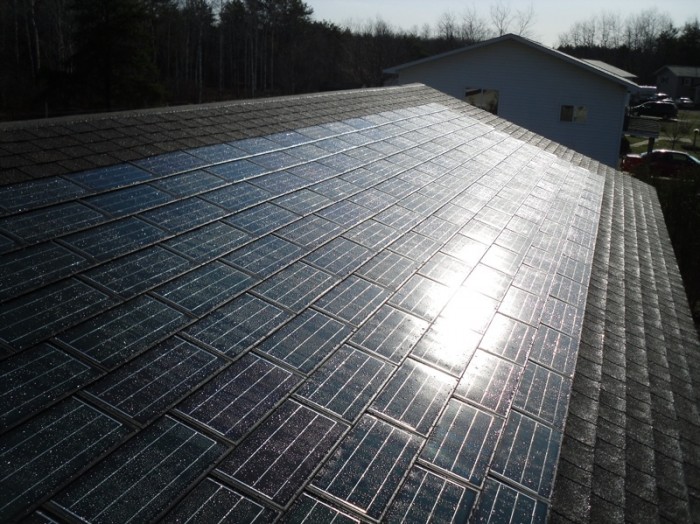Elon Musk’s Promise of “Solar Roofs” Has Echoes of a Rust Belt Failure
As leader of two flashy green-tech companies, Elon Musk has a habit of doubling down on bold claims. And he played to form in SolarCity’s most recent earnings call, dropping an oh-by-the-way mention that the company will be adding “solar roofs” to its product lineup of rooftop solar panels.
As Musk said, those are two distinct things: SolarCity already sells solar panels that go on your roof. With solar roofs, as he says, “It’s not a thing on the roof; it is the roof.”
Another word for solar roofs is “solar shingles,” and it’s been tried before. In 2011, Dow Chemical launched its product, Powerhouse Solar, with the aim of adding a new offering to the residential solar market. It was highly touted at the time; as the company’s CEO Andrew Liveris said, it was “integral to Dow's transformation, and a key part of its strategy to invent and innovate new technologies.” The company built a plant in Midland, Michigan, to manufacture the shingles. Former auto workers were retrained, and hundreds of people were hired.

It was a story straight out of a politician’s campaign speech, or SolarCity’s pitch to build its gigafactory in Buffalo, New York: green-energy jobs were going to revitalize a down-on-its-luck Rust Belt town.
The trouble is, it didn’t work. Last month, Dow announced that it was stopping its Powerhouse Solar program and shutting down manufacturing. The last shingles were scheduled to ship on Wednesday, and the “majority” of 130 workers in the company’s Dow Solar division would be laid off in Midland and Cupertino, California—part of an overall planned layoff of 700 jobs in Michigan and 2,500 globally.
SolarCity’s product may very well be completely different from Dow’s shingles. And there’s no reason to suspect it’s necessarily doomed, despite the fact that SolarCity continues to lose money at a good clip. SolarCity’s biggest problem may be that it built its business on leasing its panels to customers, when in fact owning a rooftop solar array is looking pretty good to customers these days. So if the company moved into building solar roofs that it could sell, that might be a good thing.
But as they charge ahead with their sprawling gigafactory, Musk and SolarCity might want to be very specific about what is meant when they say they want to build “solar roofs,” given that a very similar technology has come before, and its track record isn’t the sunniest.
(Read more: Wall Street Journal, CNN, MLive, “Paying for Solar Power”)
Keep Reading
Most Popular
Large language models can do jaw-dropping things. But nobody knows exactly why.
And that's a problem. Figuring it out is one of the biggest scientific puzzles of our time and a crucial step towards controlling more powerful future models.
The problem with plug-in hybrids? Their drivers.
Plug-in hybrids are often sold as a transition to EVs, but new data from Europe shows we’re still underestimating the emissions they produce.
Google DeepMind’s new generative model makes Super Mario–like games from scratch
Genie learns how to control games by watching hours and hours of video. It could help train next-gen robots too.
How scientists traced a mysterious covid case back to six toilets
When wastewater surveillance turns into a hunt for a single infected individual, the ethics get tricky.
Stay connected
Get the latest updates from
MIT Technology Review
Discover special offers, top stories, upcoming events, and more.